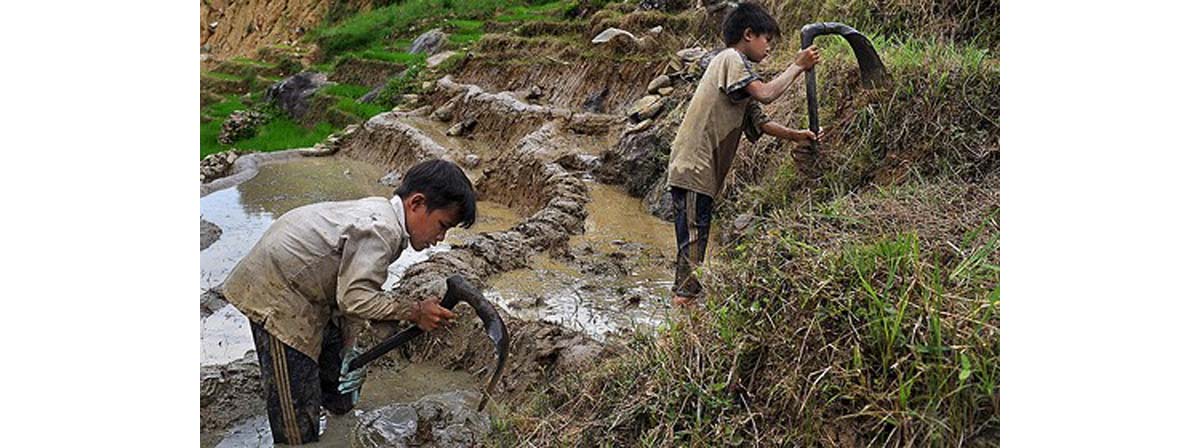Table of Contents
Child labor, and hazardous forms of child labor in particular, are very much seen as a developing-world problem in western society. Do you think child labor doesn't happen in your neighborhood, region, or country? Think again. Kids living in industrialized nations — legally or not — are subjected to risky work as well. Half of the world's human trafficking victims are children being trafficked for labor or sexual services.

It's difficult for those of us living comfortable lives and raising our children in societies that protect their rights to comprehend the far-reaching consequences child labor has on children. When it comes to hard physical labor that poses a clear health risk, like mine work, children face the same risks as adults doing the same work alongside them, but also additional dangers.
Did you know that 53 percent of child laborers across the world are involved in hazardous work — in order words work that can cause permanent damage to their health, or even be fatal? The number of girls aged 15 to 17 doing hazardous work decreased by 20 percent between 2004 and 2008, but the overall number of children of these ages working such dangerous jobs went up during that same time period.
Sixty-two million children between the ages of 15 and 17 are now engaged in risky labor, which is up from 52 million four years prior. If you thought younger children were exempt from hazardous work, think again. A whopping 53 million boys and girls between the ages of five and 14 are active in dangerous forms of child labor.
What We Can Do To Stop Child Labor
Child labor seems so far away from us that we can't do anything to stop it. It is quite clear that compulsory and free primary education, unionization of work places, and parent education on the hazards of child labor form effective strategies to reduce child labor rates dramatically — not to mention passing legislation to prohibit the practice in jurisdictions where this has not already been done, and then to enforce the prohibition.
Some of you may recall a scandal in which 13 to 15 year-old children were found working in a Mexican factory that produced cloths with university logos for Nike and other American companies. It was the activism of American citizens, writing letters to CEOs, that helped unionize the workplace and ensure rights were not infringed.
You may also remember that the 2000 Olympics didn't include any product created through illegal child labor, because of the activism of human rights campaigners, trade union activists and ordinary citizens just like you and me.
After I found out that clothing company Zara was accused of utilizing child labor to create the clothes I buy for my kids, I stopped being their customer. Small steps like this can make a big difference in the lives of children across the world. You can:
-
Use the internet to check whether products you are buying are being produced through child labor.
-
Become engaged in campaigns against child labor through your trade union.
-
Support charities that fund education for children in developing countries, or human rights campaign groups that seek to halt child labor by pressuring governments throughout the world.
- Photo courtesy of Owen and Aki by Flickr : www.flickr.com/photos/mikenan1/4051771165/
- Photo courtesy of ILO in Asia and the Pacific by Flickr : www.flickr.com/photos/77173826@N08/8762249877/
- www.news.com.au/lifestyle/fashion-beauty/zara-hit-by-slave-labour-allegations/story-fnet01u7-1226612247996
- www.continuetolearn.uiowa.edu/laborctr/child_labor/about/ending.html
- www.ilo.org/ipec/facts/lang--en/index.htm
- www.ilo.org/ipec/facts/WorstFormsofChildLabour/Hazardouschildlabour/lang--en/index.htm
- www.huffingtonpost.ca/joan-kelley-weisshaar-walker/child-labour-canada_b_3511715.html#slide=2562036


Your thoughts on this